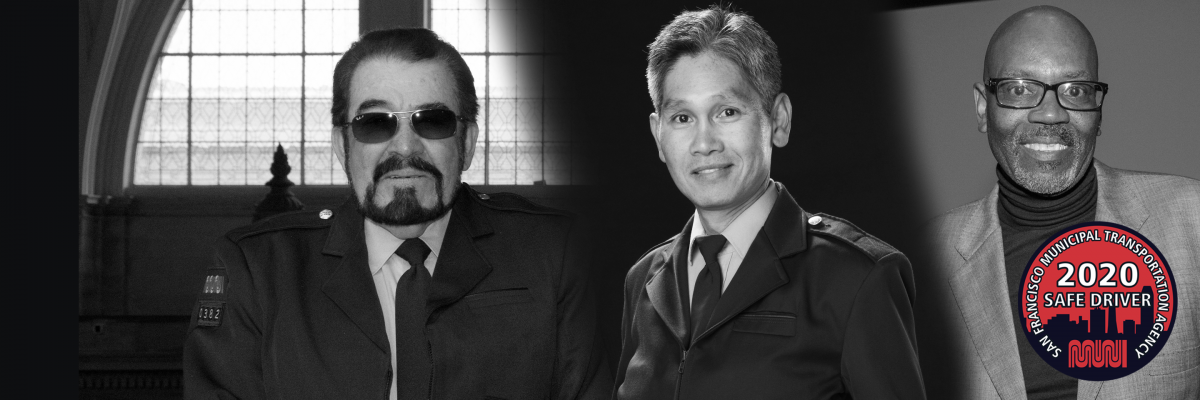By
Very few drivers can make the claim they have successfully navigated the congested streets of San Francisco for years on end without having any preventable safety incidents. But 299 of the SFMTA's 2,500 Muni operators can proudly say they have done so for at least 15 years, and some for decades. This month these operators get a token and patch to wear, honoring the Safe Driver record.
Recognizing these employees, Director of Transportation Jeff Tumlin stated that, "Safety is SFMTA's number one priority. It is my privilege to honor this year's Safe Driver Award recipients. These professionals deliver for the people of San Francisco and lift up the entire agency. Safe Drivers, thank you for your dedication and your service.”

Safe Driver honorees with a remarkable record of 35 or more years. From left to right: Oliverio Valle, Cable Car Division, 46 Years; Lonnie Moore, Jr., Green Division, 43 years; Jason Lao, Green Division 36 years.
What Constitutes a Safe Driver?
Simply put, a safe driver is an operator who has driven a minimum number of qualifying hours each fiscal year with no avoidable safety incidents. To earn the 2020 Safe Driver Award, operators must have driven at least 1,387 hours during the past fiscal year without a preventable incident (adjusted to account for the service reductions that occurred due to COVID-19).
For operators meeting the strict safety guidelines, 2020 posed unique challenges. "Our transit operators have endured some of the most difficult situations that we have ever had to face," said Roger Marenco, president of Transport Workers Union Local 250A. "In 2020, our operators showed that they were ready, willing and able to fulfill their duties as disaster service workers in the midst of a pandemic. By putting their health and safety on the line, our operators were able to keep our city moving by providing one of the most important services: public transportation."
The COVID-19 pandemic required the SFMTA to adjust Muni operations in order to keep both operators and customers safe. Between new face covering requirements and limits on the number of customers per vehicle, operators were asked to quickly adapt to an ever-changing environment. In addition, we implemented a new core service plan in April, with several updates throughout the year, that meant operators needed to adjust to new routes, new equipment or both.
Make no mistake, Muni operators take this Safe Driver honor, and the patches they receive, very seriously. It's a big deal. Navigating a 40-foot vehicle or longer, through 49-square miles of hilly, winding San Francisco terrain is no easy task. Add navigating traffic with ride-share vehicles, private and commercial vehicles, taxis, bicycles, scooters and pedestrians into the mix and the challenges escalate quickly.
Honoring Safe Drivers

The initial patch is given after three years of safe driving. Subsequent tab-style patches are presented in five-year increments and are worn on their uniform sleeve.
The SFMTA relies on thousands of operators who provide safe daily service to customers throughout the entire Muni network. "Congratulations 2020 Safe Drivers," said Julie Kirschbaum, SFMTA Transit Director. "You have demonstrated an extraordinary commitment to safety during a very challenging year. While we cannot celebrate in person this year, your accomplishment does not go unnoticed. Thank you for all that you do to safely move our customers throughout San Francisco."

The 2020 Safe Driver Award Token harkens back to the SF Municipal Railway tokens that were introduced for fare payment in the 1940s.
We honor not just these 299 extraordinary individuals, but all of those who work so hard to make safety the standard by which we operate.
Published February 03, 2021 at 12:44AM
https://ift.tt/3oCM7Hf
Nhận xét
Đăng nhận xét